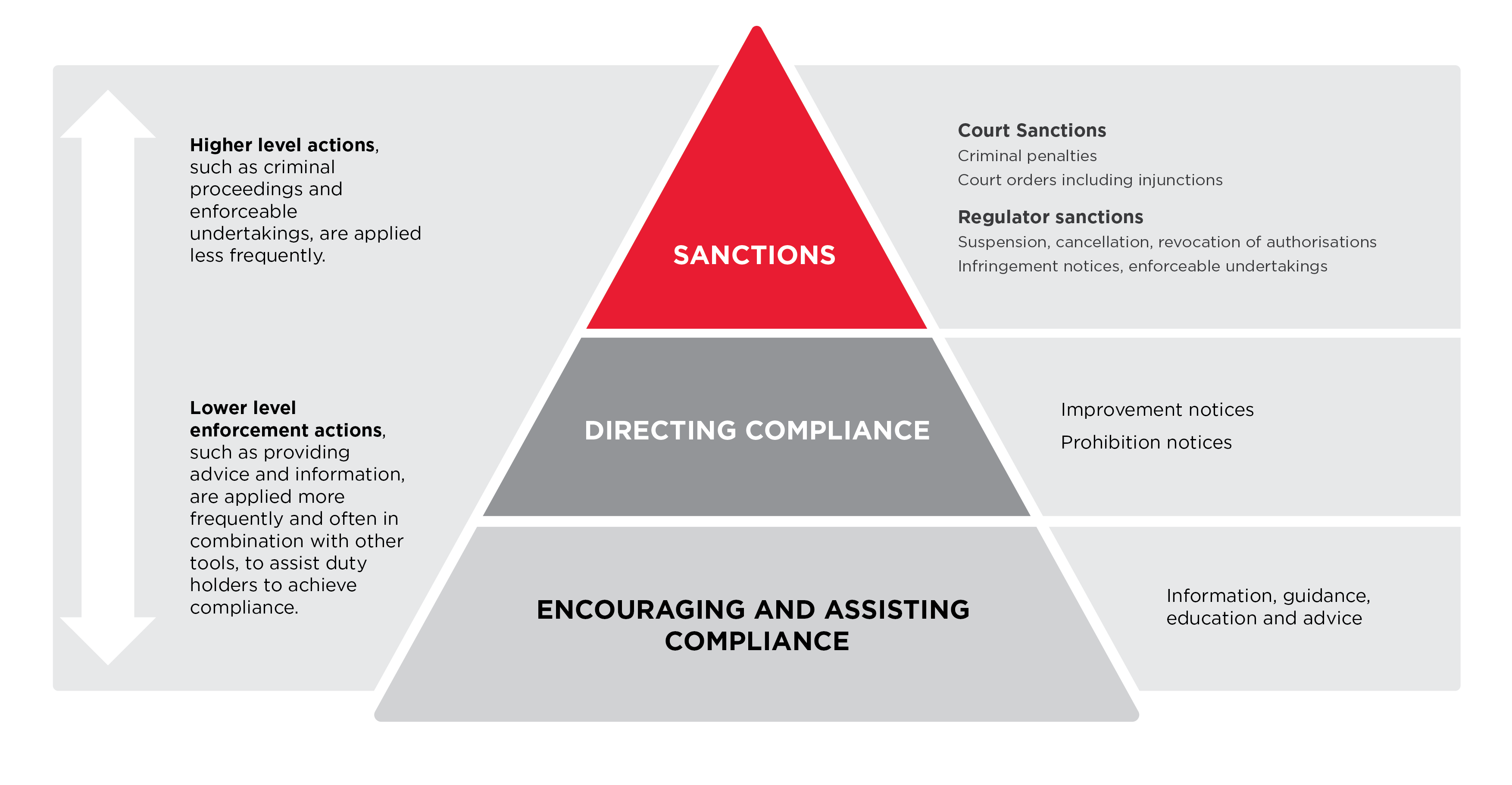The National Compliance and Enforcement Policy (NCEP) promotes a nationally consistent approach to compliance and enforcement of work health and safety (WHS) laws. Some WHS regulators have adopted the NCEP in full, while others have incorporated elements of the NCEP into their own compliance and enforcement policies.
What’s in the National Compliance and Enforcement Policy
The policy identifies priority areas for action, including:
-
work-related fatalities
-
serious injuries (or where there is a risk of them happening)
-
offences against health and safety representatives
-
matters relating to entry permit holders and discrimination against workers
Policy principles
The policy guides regulators to monitor and enforce compliance with WHS laws through these principles:
-
Consistency – Regulators try to ensure similar circumstances at workplaces lead to taking similar approaches, providing greater protection and certainty in workplace and industry.
-
Constructiveness – Regulators support, advise and guide on compliance with WHS laws and build capability.
-
Transparency – Regulators show impartiality, balance and integrity.
-
Accountability – Regulators are willing to explain their decisions and provide ways to make a complaint or appeal a decision.
-
Proportionality – Compliance and enforcement responses equal the seriousness of the conduct.
-
Responsiveness – Compliance and enforcement measures respond to the particular circumstances of the duty holder or workplace.
-
Targeted – Activities focus on those areas, which are assessed highest risk to health and safety.
How regulators use the policy
Regulators administer WHS laws within their jurisdiction. Regulators inspect workplaces, and advise on and enforce laws, including to:
-
give advice about rights, duties and responsibilities, and complying with local laws
-
help people resolve WHS issues
-
issue notices.
Compliance monitoring is one technique regulators use to encourage high levels of compliance with WHS laws.
In general, regulators monitor compliance through inspections and audits, which can be either planned (targeted) or responsive. They also receive incident notifications and requests for assistance with WHS issues from businesses and workers.
The NCEP helps WHS regulators work out which complaints or reports to investigate or prioritise, depending on:
-
the potential for harm
-
how seriously it might breach the law
-
how relevant the event is, including with concern to the community
-
the duty holder’s compliance history.
Enforcement pyramid
The policy promotes enforcing laws in ways equal to the issue.
Regulators will not always use the lowest level of enforcement actions first. It depends on the issue. For example, a regulator may start legal actions for a serious injury rather than giving information and guidance.
At other times, regulators may combine actions, such as:
-
providing advice
-
issuing an improvement notice.
Supporting Information
For more information on enforcement mechanisms see How do the regulators enforce WHS laws?


